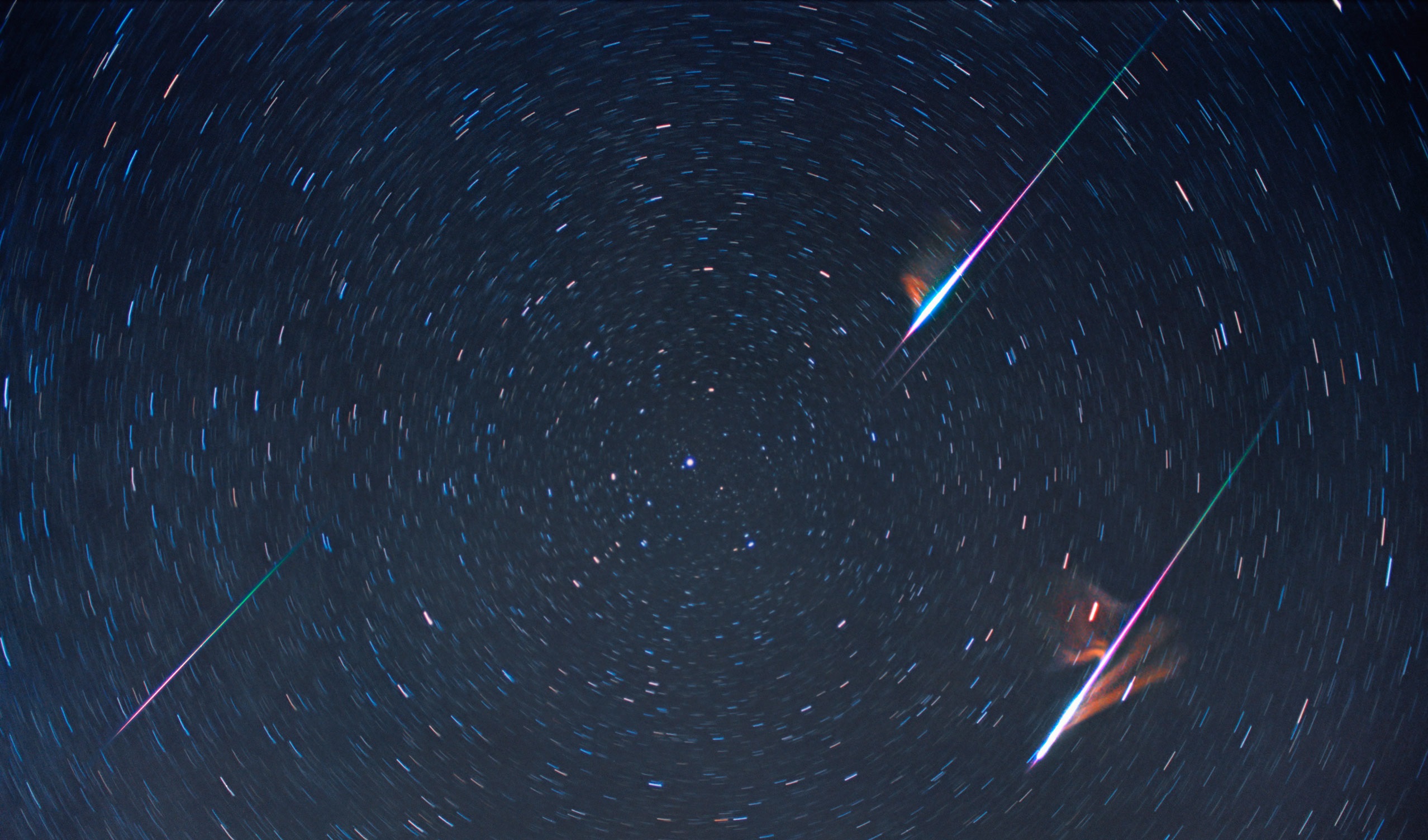
Summer is well underway and COVID-19 restrictions are easing. However, as life gets back to ‘normal’, it can be difficult to slow down and take in what’s around you. That includes admiring that beautiful summer night sky.
For all you amateur stargazers, trade in the city’s light pollution for a clear sky. Grab a sleeping bag, a blanket or a beach towel and lie on your back. Give your eyes 15-20 minutes to adjust to the darkness. Then, allow yourself to take it in and enjoy the meteor showers!
What are Meteor Showers?
According to NASA Science, meteors originate from “leftover comet particles and bits from broken asteroids.” Comets leave a dusty trail when coming around the sun. Earth passes through those debris trails yearly, allowing the “bits to collide with our atmosphere and disintegrate” into “fiery and [colourful] streaks in the sky,” as per NASA Science.
Meteor Showers this July-August
There are meteor showers throughout the year. However, the summer is when most of us have the free time and good weather to actually enjoy them, so don’t miss out!
The Southern Delta Aquariids
The Delta Aquariids are suspected to originate from Comet 96P Machholz and Constellation Aquarius which passes by the sun every 5 years. These meteors are active from July 12 to August 23, with their peak being on July 28 and July 29. Around 20 meteors an hour travel at approximately 41 km per second.
They’re hard to spot when the moon is around. However, they’re easier to see between 2 and 3 a.m.. If you can’t see the Delta Aquariids during their July peak, NASA Science recommends you look out for them during the August Perseids.
You’ll be able to distinguish them from the Perseids if you pay attention to where they’re coming from. Delta Aquariids come from the constellation Aquarius. Delta Aquariids’ radiant is in the southern part of the sky.
The Delta Aquariids are most visible from the Southern Hemisphere and the southern latitudes of the Northern Hemisphere. Regardless of your location, NASA Science recommends you look “halfway between the horizon and zenith, and 45 degrees from the constellation of Aquarius” to try your luck.
The Perseids
The Perseids originate from Comet 109P/Swift-Tuttle which is about 27 km wide and from Constellation Perseus. Comet Swift-Tuttle takes around 133 years to orbit the sun, the last time being in 1992. These meteors are active from July 14 to August 24, peaking on August 11 and August 12. In general, there are up to 100 meteors an hour and from 160 to 200 during the peak. The meteors burst at around 97 km overhead on warm summer nights.
According to NASA Science, the Perseids tend to be considered “the best meteor shower of the year.” Perseids leave long streaks of colour and light behind them as they come through the Earth’s atmosphere. As per NASA Science, the Perseids are also “known for their fireballs.” Those are big explosions of colour and light that linger longer than the “average meteor streak.” Fireballs are brighter and come from bigger particles of “cometary material.”
NASA Science writes that the Perseid Radiant is in the “northern part of the sky.” The Perseids are most visible in the Northern Hemisphere during pre-dawn. However, if you don’t want to spend the entire night waiting for them, you might get a glimpse of some as early as 10 p.m.!
Watch Meteor Showers Near You!
To find out the meteor shower activity near you, check out the Meteor Shower Flux Estimator.
To find the best spots to go admire meteor showers near you, check out Earth Sky’s Best Places to Stargaze. If you can’t find one, Earth Sky recommends stargazing in your nearest park or field.
The Government of Canada also recommends making sure trees and buildings aren’t blocking your view of the horizon. They recommend you check the weather forecast before going out for a night of stargazing.
They also suggest you avoid looking at bright lights while stargazing as that will make your eyes less sensitive. In fact, get around with a red light if possible. Finally, consider joining a local astronomy club to share your stargazing passion with folks in your area!





